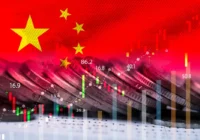The world’s most consequential bilateral relationship just got a little more consequential with former and now future US President Donald Trump’s re-election. Incumbent President Joe Biden’s quiet, steady approach to diplomacy with Beijing is about to be replaced by a clash between two authoritarian leaders determined to stay a step ahead of each other in an effort to reign supreme. Tariffs and a sledgehammer will once again prove to be Trump’s manipulative tool of choice, while Chinese President Xi Jinping will rely on superior strategic planning and soft power muscle flexing to promote his agenda and China’s place in the world.
Among the things Trump got right during his first residency in the White House was slapping Congress and the American public upside the head with a two-by-four to finally wake them up and realize that the Communist Party of China (CCP) is not a benign force in the world. This time around, Trump has the advantage of a Congress and an American public nearly unified in their opposition to the CCP, which should make it easier to ramp up the pressure on Beijing, particularly given the Republicans’ clean sweep of the Executive and Legislative branches.
Trump’s “subtlety of a Mack truck”-driven approach to foreign policy stands a good chance of backfiring vis-à-vis American businesses, however, as many of them continue to feed from the Chinese teat. Tens of thousands of American businesses continue to manufacture, import from and/or export to China despite the many hardships associated with COVID-19, the downturn in the Chinese economy and the crackdown on foreign businesses in recent years. Their voices will undoubtedly be heard at the White House as Trump attempts to tighten the noose on Beijing.
Trump’s cabinet and other nominations to date provide ample evidence that he is intent on burning the place down — so why stop at America’s borders? The foreign policy patch-up job Biden attempted to complete over the last four years — during which, many European governments, in particular, silently wondered whether an agreement with Washington was worth the paper it is printed upon — will be quickly eviscerated. An unvarnished foreign policy whose core is nationalism, protectionism and a zero-sum approach to engagement is sure to delight friend and foe alike.
Is China ready for four more years of Trump?
Beijing is certainly ready, with a list of countermeasures aimed at the American government and American businesses. US businesses in China are going to find operating there even more unpleasant for the next four years. The CCP may also be expected to attempt to strengthen its bilateral relationships around the world as America retreats and will undoubtedly find heightened levels of interest, especially in the Middle East, Africa and Latin America. The newly inaugurated mega-port in Peru is emblematic of how Beijing continues to use its Belt-and-Road infrastructure projects to strengthen its economic and diplomatic relationships. Trump’s re-election meshes nicely, also, with Beijing’s policy of self-reliance and the Made in China 2025 policy.
But the degree of economic, political and diplomatic malaise in China will also be impacted by Trump’s second term. The Chinese economy could be significantly smaller than official statistics suggest. It is spending more and more to produce less and less. Most of its natural resources are in decline, its workforce is shrinking, Xi’s dictatorial rule has prompted increasing domestic uneasiness, its economy is under growing pressure, and its Asian neighbors are ever ore alarmed by China’s aggressive actions in the region — and they are reacting to it.
China is exhibiting classic signs of a peaking power. Xi’s crackdowns at home and increasing aggression abroad. The military buildup during peacetime is unprecedented. And China is much more willing to extend its security perimeter and to strengthen its alliances with some of the world’s most detestable regimes.
The Chinese word for crisis (wēijī) contains characters that signify danger (危) and opportunity (机), and Trump 2.0 represents both. Xi will want to use the next four years to de-emphasize China’s many domestic challenges and re-emphasize its growing stature in the world. If one envisions a cessation of the Ukraine and Israel/Gaza/Lebanon/Iran wars in 2025, Xi will feel he has more latitude to further strengthen China’s relationships with Russia, Iran, and Israel. Similarly, he is likely to feel more emboldened to introduce new initiatives to ingratiate China with a broader array of governments in areas where progress has been less pronounced, such as regarding climate change and natural disaster relief.
It seems doubtful that Trump will choose to embrace areas of possible collaboration with China, but we can expect a heightened degree of generalized competition, with an increased potential for conflict. Trump’s presidency will coincide with 2027 — the year Xi has targeted for the Chinese military to be ready to invade Taiwan. Trump will likely be tempted to cut some sort of deal with Xi (as he is so transaction-oriented) to essentially cede Taiwan to Beijing in return for something of substance for America. One can only speculate what that might be, but what seemed impossible only a few years ago seems increasingly possible, if not likely, now.
The views expressed in this article are the author’s own and do not necessarily reflect Fair Observer’s editorial policy.
Support Fair Observer
We rely on your support for our independence, diversity and quality.
For more than 10 years, Fair Observer has been free, fair and independent. No billionaire owns us, no advertisers control us. We are a reader-supported nonprofit. Unlike many other publications, we keep our content free for readers regardless of where they live or whether they can afford to pay. We have no paywalls and no ads.
In the post-truth era of fake news, echo chambers and filter bubbles, we publish a plurality of perspectives from around the world. Anyone can publish with us, but everyone goes through a rigorous editorial process. So, you get fact-checked, well-reasoned content instead of noise.
We publish 2,500+ voices from 90+ countries. We also conduct education and training programs
on subjects ranging from digital media and journalism to writing and critical thinking. This
doesn’t come cheap. Servers, editors, trainers and web developers cost
money.
Please consider supporting us on a regular basis as a recurring donor or a
sustaining member.
Will you support FO’s journalism?
We rely on your support for our independence, diversity and quality.







Comment